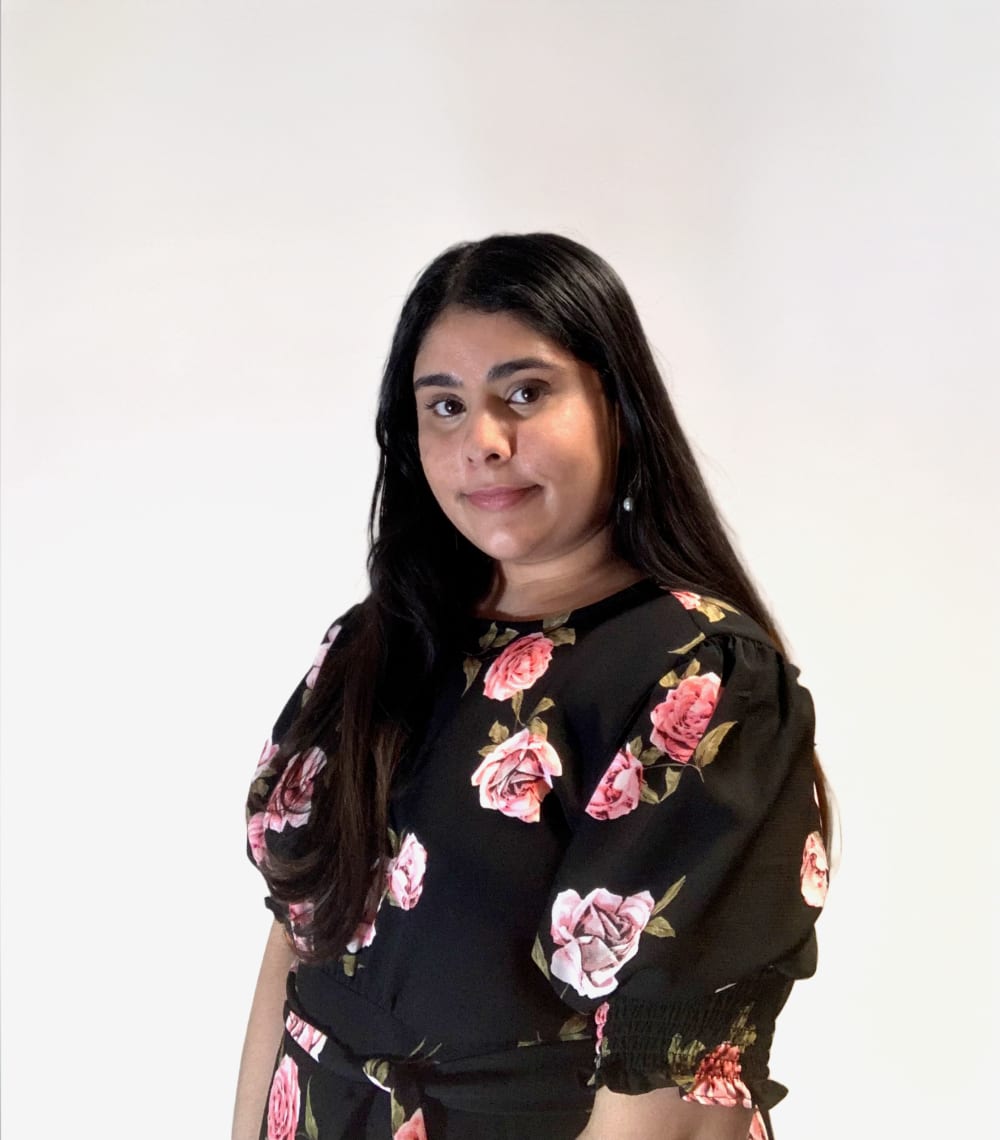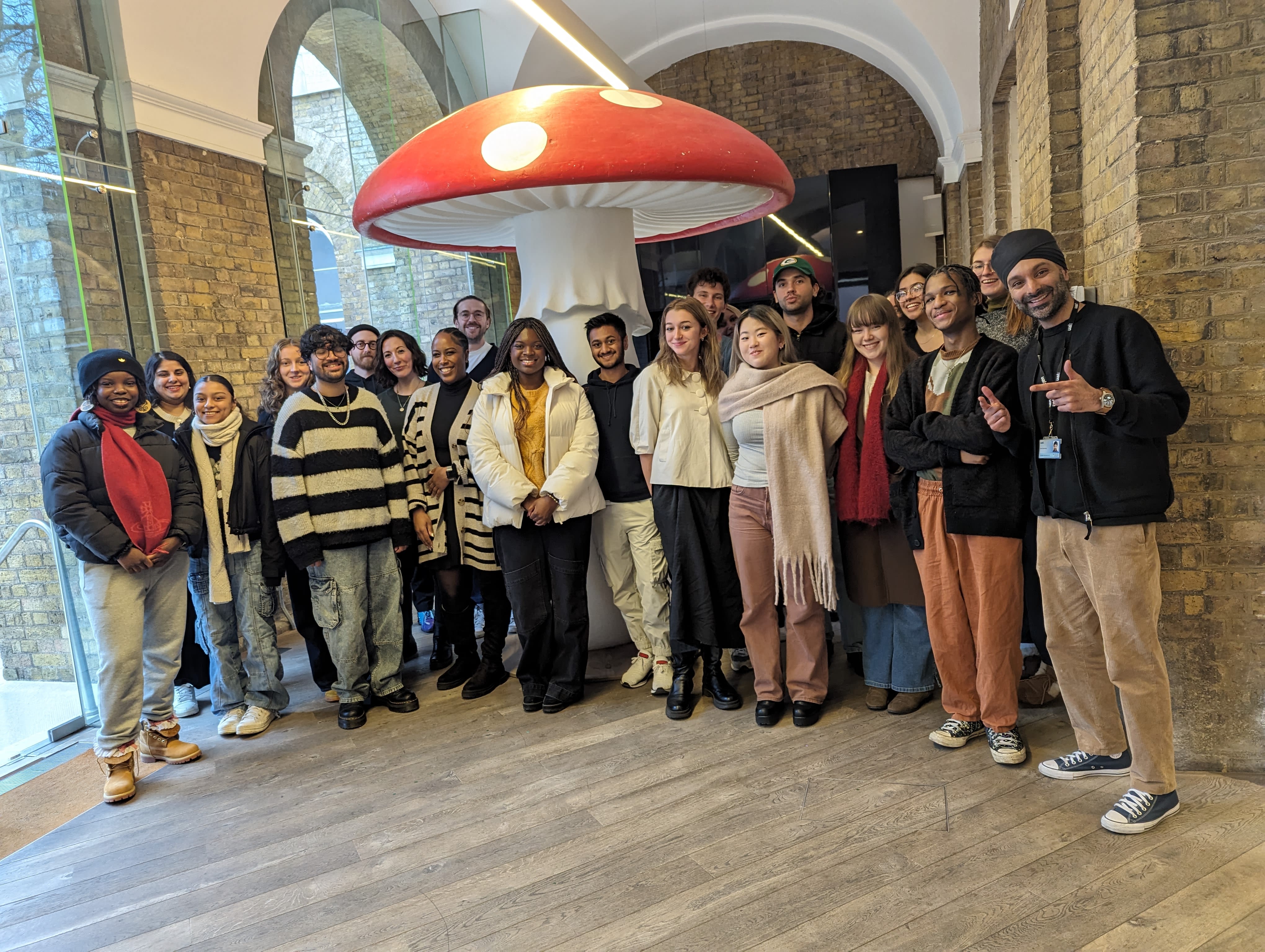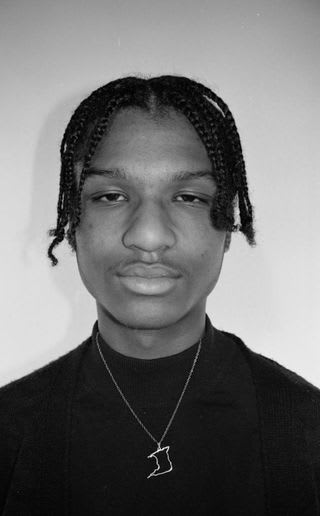
Highlights from the 2024 Creative Shift x venturethree x Castore collaboration

- Written byStudent communications
- Published date 11 July 2024

This year, Creative Shift joined forces with independent global brand company, venturethree (v3) and their client, premium sportswear brand Castore, to offer students an exciting opportunity to gain hands-on experience and practical skills by tackling an industry live brief.
Throughout the intensive 10-week programme, students collaborated in small teams, preparing to pitch their innovative ideas aimed at transforming how female audiences perceive and engage with the Castore brand. Guided by experienced Creative Coach Abraham Asefaw, they explored new creative approaches.
From this year’s cohort, we caught up with CCI Bsc Creative Computing student Tia Tshabola, LCC Photojournalism and Documentary Photography student Jaydon Scott and CSM BA Graphic Communication Design student Tia Kumar to reflect on their experiences.
How do you think it’s beneficial for you, as students, to collaborate with industry partners during your time at university?
Tia T: It is very (very!) important because it refines you for the real world. In university, it’s easy to get comfortable with the same in class assignments, that you forget that you have to actually go out and find a job. Also, as a Black student, you can be afraid of the bias with finding a job in your desired industry. However Creative Shift is definitely breaking those barriers by helping underrepresented students in UAL.
Jaydon: It gives us a foot in the hard door that is the industry. Working to the brief and knowing it isn’t for university but for a “client", we were able to get hands on experience within the sector and network with people who can potentially help you in the future.
Tia K: Entering the industry is challenging for students, significantly, since it heavily depends on experience, which is hard to gain while studying full-time. Opportunities like these help us stand out to employers and make it easier to secure future roles. Transitioning from student projects to industry collaborations can be daunting, but having support from mentors and creative coaches is hugely beneficial. This support boosted my confidence to step into the industry independently following the brief.
What was the most surprising insight or lesson you learned from this experience?
Tia T: 2 words, BE HUMBLE! Reflecting on it now, I love that this opportunity with Castore, v3 and Creative Shift gracefully broke my character down to help me realise that I will not always be the best at a task, and it is okay to ask for help and let others take the wheel.
Jaydon: The most surprising insight I found was how valuable and enjoyable the research stage is. For a few weeks before our idea was formed, we looked at the world and society around us to see what they have to say and how we can fill gaps they make evident. The whole process was new but the part I ended up liking the most, where to look and what to take away and apply to our team brief.
Tia K: As students, we often perceive a significant gap between us and industry professionals. However, this experience demonstrated to me that we are more level than we think, and building confidence is crucial and can be the main barrier for students. It also highlighted that the design industry values working with students, and there is a high demand for us because we bring fresh and unique perspectives, which is crucial in the design world where most ideas have already been explored.This realisation gave me a newfound confidence in my design abilities and the value we can contribute as students without undervaluing ourselves.

Can you tell us what you enjoy the most about collaborating with other students from different disciplines during this project?
Tia T: I enjoyed the different thought processes of creative students approaching the v3 brief first hand. My team, I was taking a technological and innovative perspective when maybe another person would’ve taken a logical and structured perspective. In the end, all of our characteristics helped balance our ideas to fit it to the brief.
Jaydon: What I enjoyed most about the collaboration was seeing just how far we could push the brief due to the different art mediums we all take space within. We had a strong digital base with website and graphics being created as well as physical leaflets to leave Castore with and a video edited by another member of the team so 3 areas were covered due to our collaboration.
Tia K: Meeting students from different courses and building friendships was a great opportunity. Additionally, working with a multidisciplinary team was incredibly valuable. Collaborating with students and professionals with diverse design skills provided varied insights and learning opportunities. This diversity enhanced our final outcome and emphasised the importance of collaboration in the design industry.
Were there any moments during the project where you had to step out of your comfort zone? How did you handle it?
Tia T: Definitely! Balancing university work and the brief was sometimes difficult, but through this difficulty I learnt how to keep myself organised - as you would have to do in the real working world.
Jaydon: There were times where I had to take more of a leadership role, scheduling calls, giving the team next steps and help in how to move forward. I usually don’t do that and found myself out my comfort zone but saw how accepting the team were so I was able to do my best.
Tia K: Pitching our project ideas to the professional design team at Castore was a new and challenging experience for all of us. This made me step out of my comfort zone, but as a team, we were well-prepared through the program for the final pitch. We received ample support, practised pitches, and were mentored on presenting effectively and professionally, which helped us handle the situation confidently and guided my team to the success of being the winning team for this year's brief.

How did you find the process of working with Abraham Asefaw as your creative coach during this project?
Tia T: His words are food for thought and I am grateful for his encouragement in the process. Throughout the entire program he was helpful with positive feedback and criticism — helping our team to deliver the best pitch we could to Castore.
Jaydon: I personally didn’t go to Abraham for 1-2-1s or advice but know he was incredibly valuable to those around me that did. I do wish I did. When he was in our sessions on a Thursday, he was able to give guidance on ideas to help us tie things together which I found helpful.
Tia K: Working with Abraham Asefaw was an incredible opportunity. His extensive industry knowledge provided us with tailored support for the project and our career ambitions. His guidance was invaluable.
How do you plan to apply the skills and experiences gained from this project to your future work or studies?
Tia T: I will be applying how to collaborate with people from different creative backgrounds. I learnt that each person has their own unique thing and learning how to attend to a weakness and strength of a person is what I will be taking forward to my future work!
Jaydon: I think mainly the teamwork and communication skills will aid me quite a lot in the future and the process of a long-term project where the different phases and what to do in them for success will aid me in creative project. These for me were the biggest skills I learnt that I could apply.
Tia K: Tackling a real-life client brief improved my problem-solving skills and taught me how to approach complex challenges creatively and effectively. It also provided a better understanding of client expectations and how to align design solutions with their needs. Finally, collaboration with diverse minds cultivated a creative environment that encouraged innovative thinking. Collectively, I can build on all of these skills in my future projects to produce more effective, innovative, and client-focused outcomes.

In what ways has this project influenced your future career aspirations or academic goals?
Tia T: I understand now that I have a visual love for marketing and I will be trying to navigate that sector through a technological perspective, which may add some uniqueness to that particular industry.
Jaydon: I would say it makes me want to work with companies more photographically, gain more briefs like this one and step into the market research field if I can. Seeing how integral that part is to it all really fascinated me.
Tai K: This project boosted my confidence in my course and inspired me to start working in the industry. I developed transferable skills such as pitching, innovation, and communication, which have already benefited me in the industry. As a result, I secured a one-year internship with Primark as a trainee designer in their Dublin head office, where I will be able to expand on these skills and develop even more.
What advice would you give to future students participating in similar projects?
Tia T: Go into it with an open mind and an open heart. Don’t be too greedy for success and let others flow.
Jaydon: Be open, so much goes into these briefs and there will be an element that you will come to enjoy if you are open, aim to connect with those around you and the external parties involved and don’t be afraid to showcase your talent however you can.
Tia K: It's normal to feel imposter syndrome when working with big clients and a design agency for the first time. It is important to remember that the programme's core purpose is to learn. Don't be afraid to make mistakes; they are part of the learning process. Take advantage of the support available and always ask for help when needed.
Creative Shift:
This project is part of Creative Shift, UAL's initiative striving to shape diversity in the creative industries and support underrepresented students.
Creative Shift delivers a programme of opportunities, working closely with industry partners to enhance students’ experience and professional development.